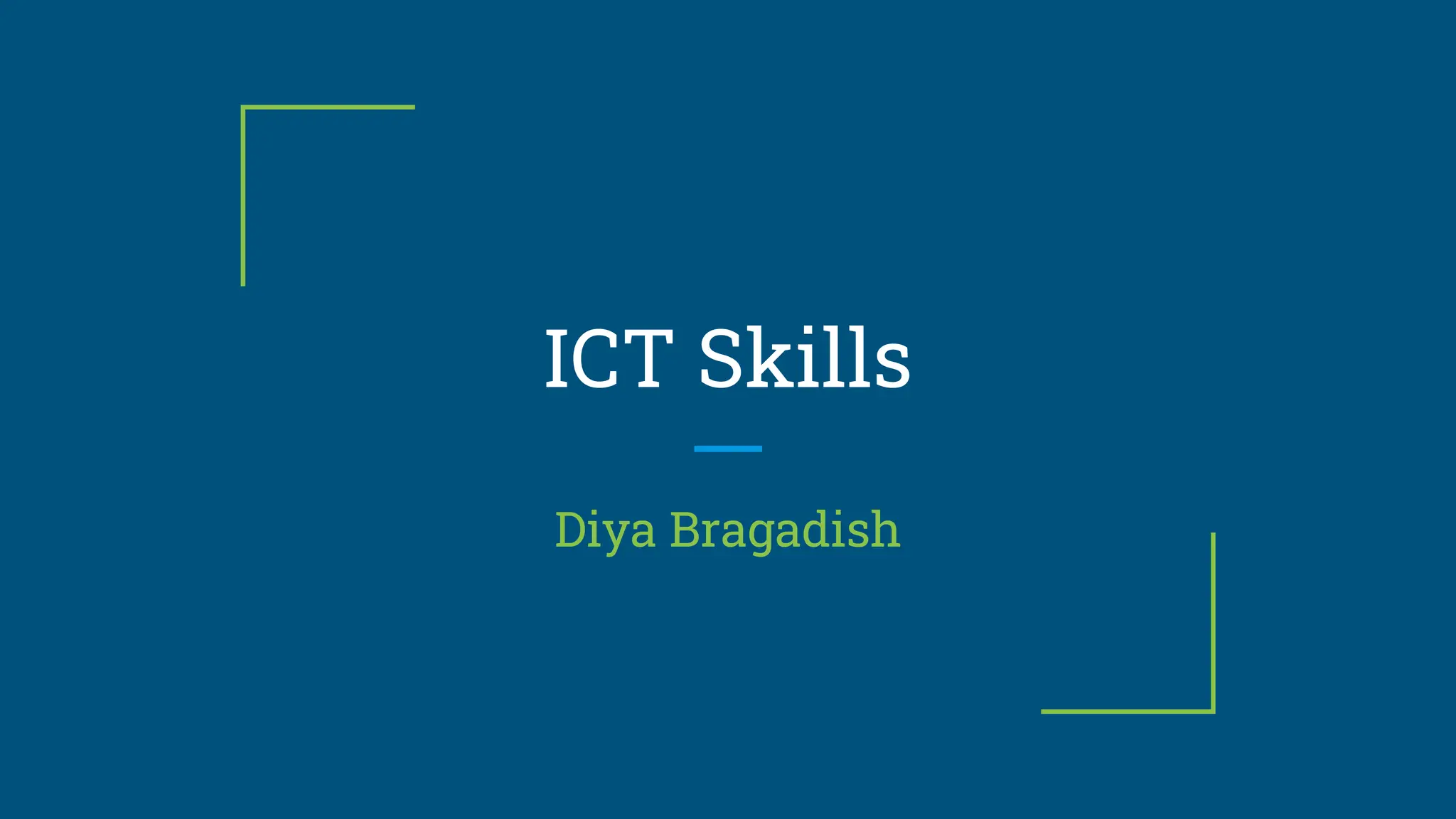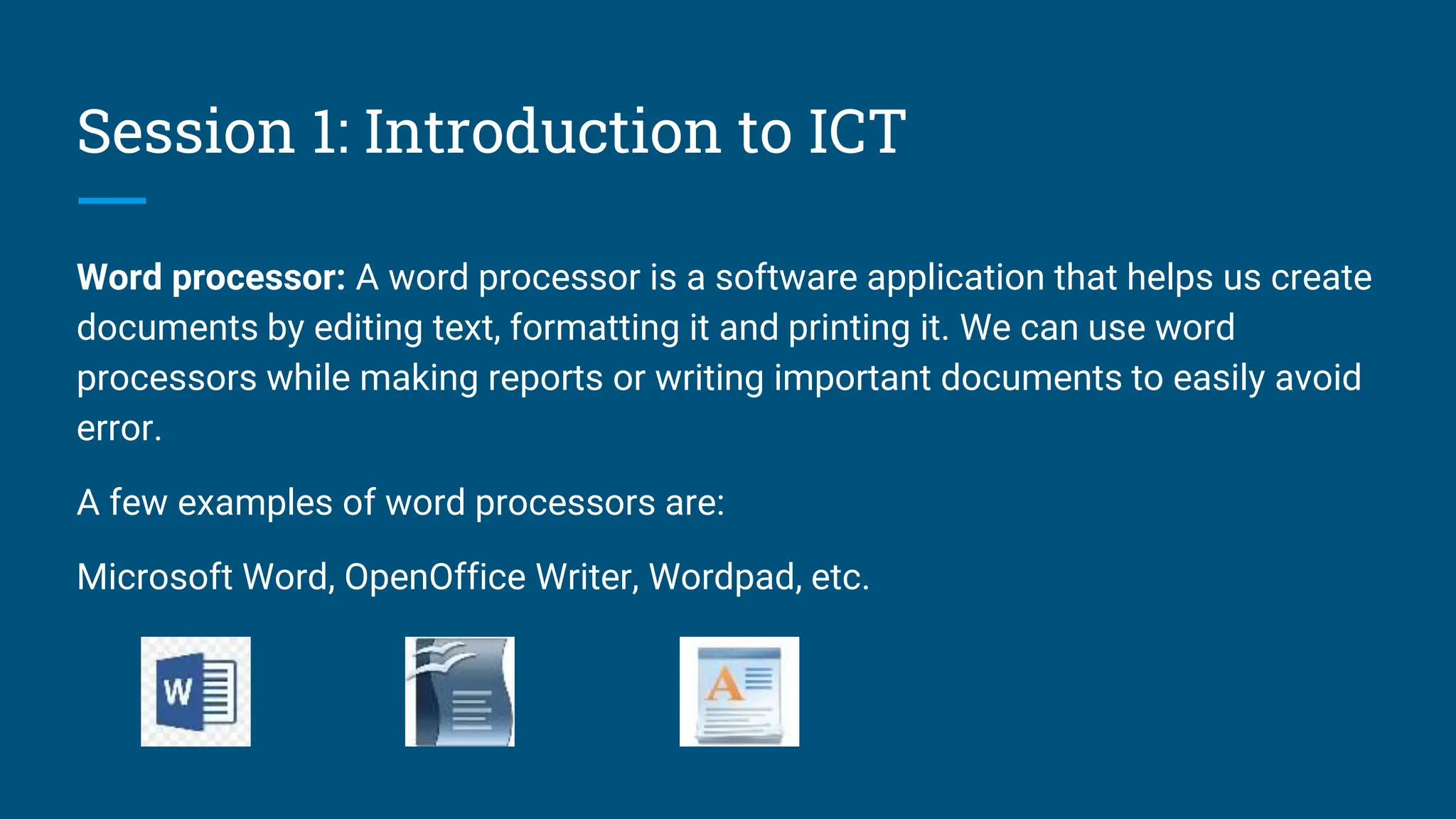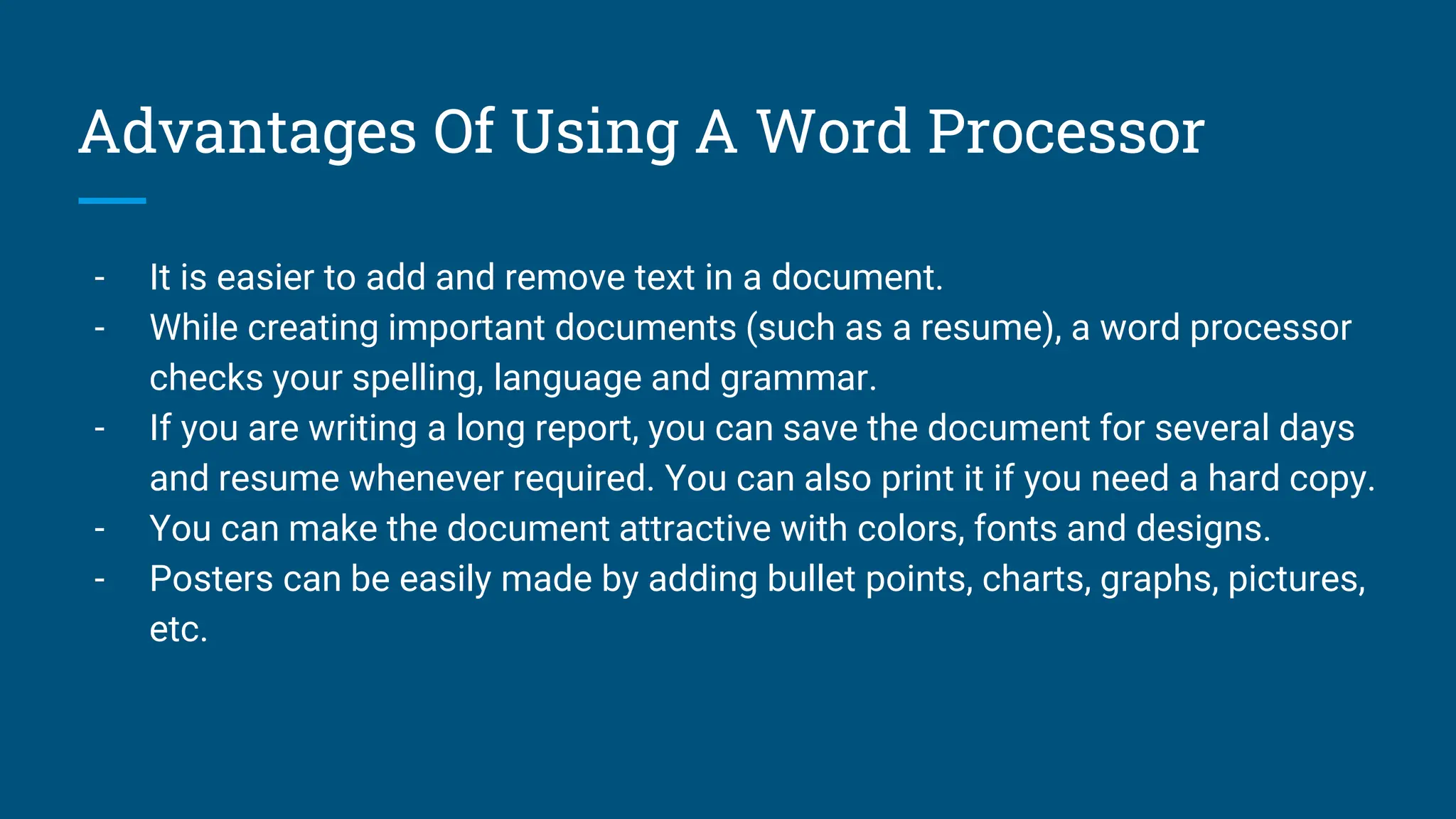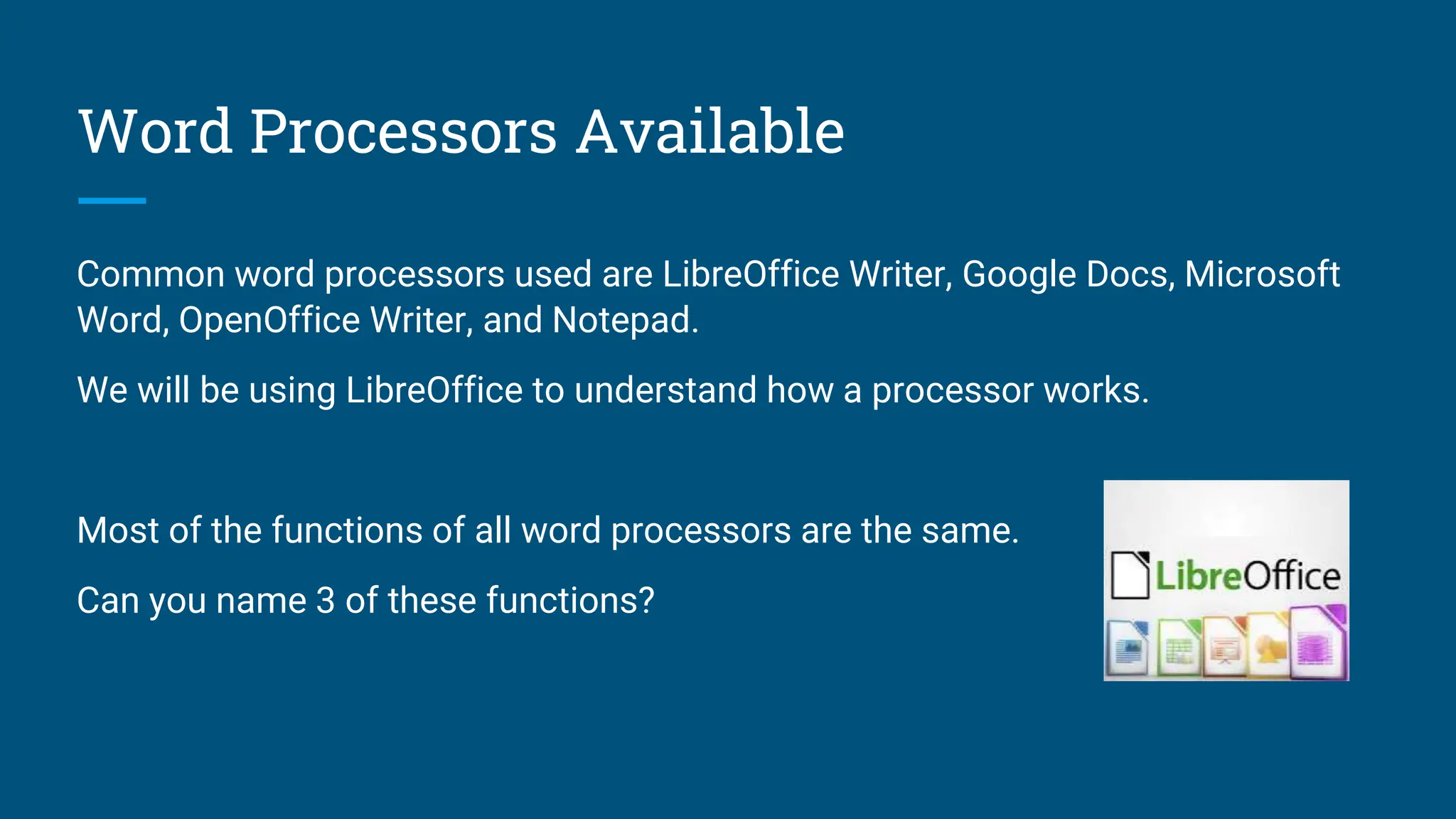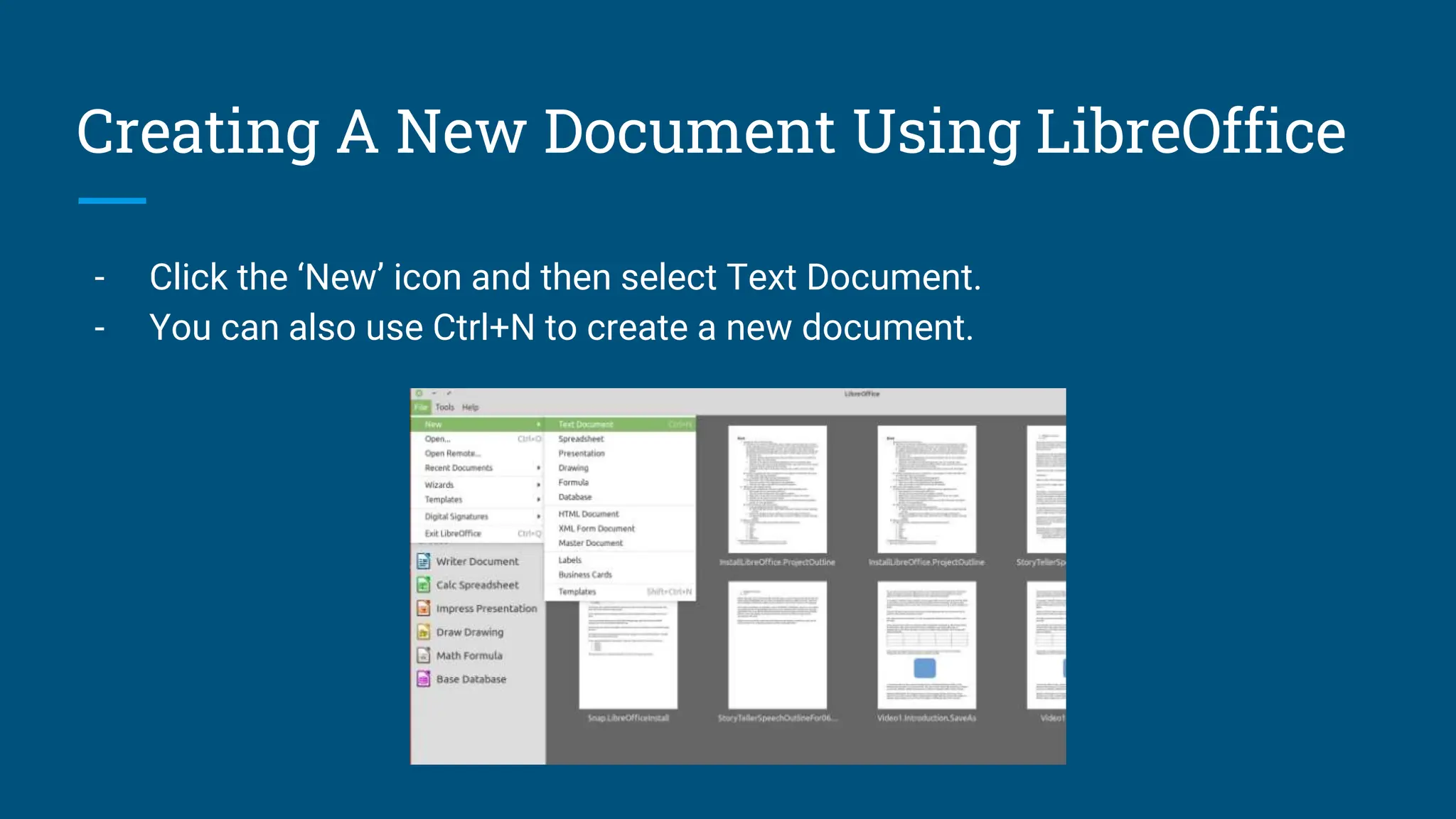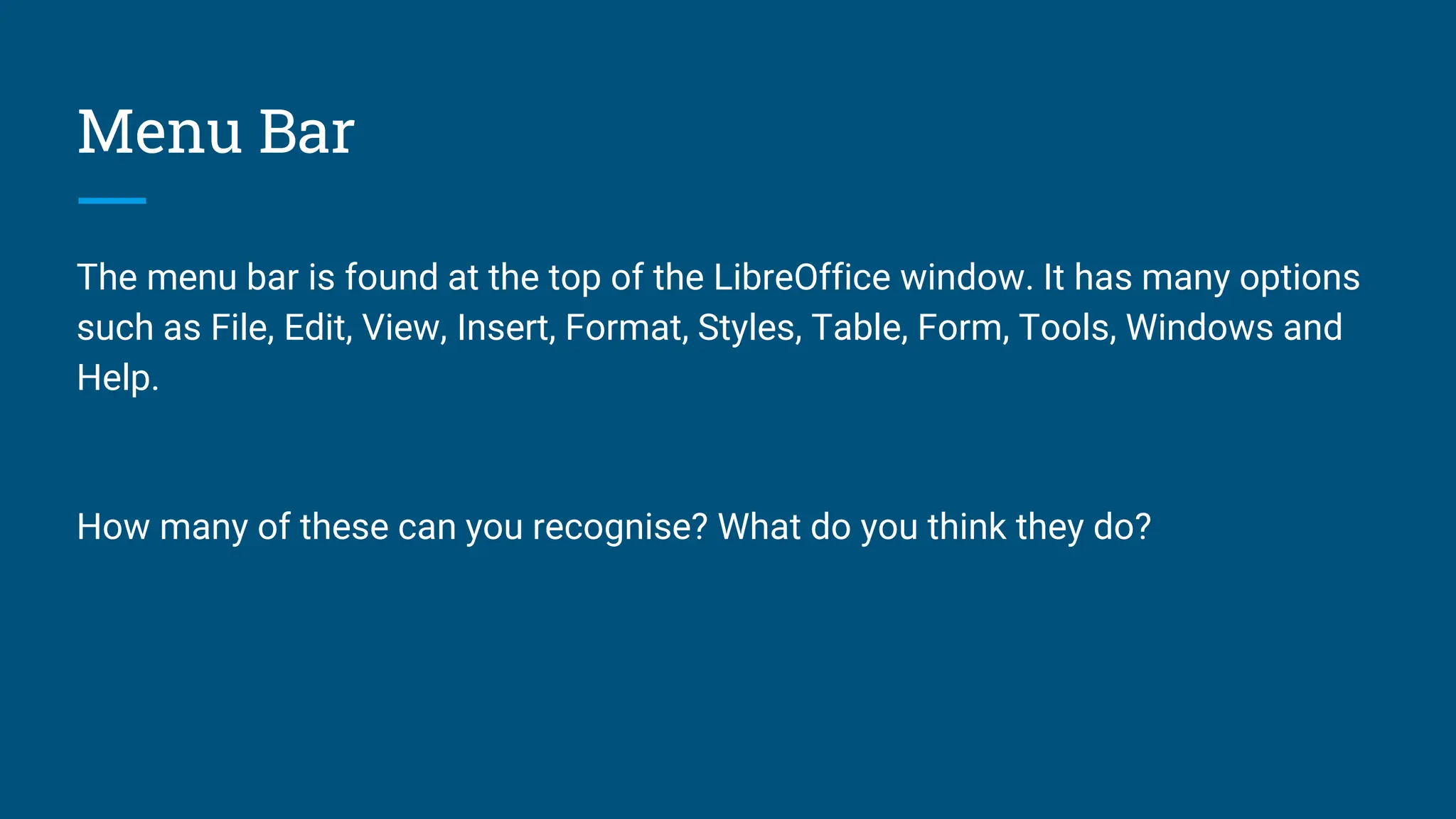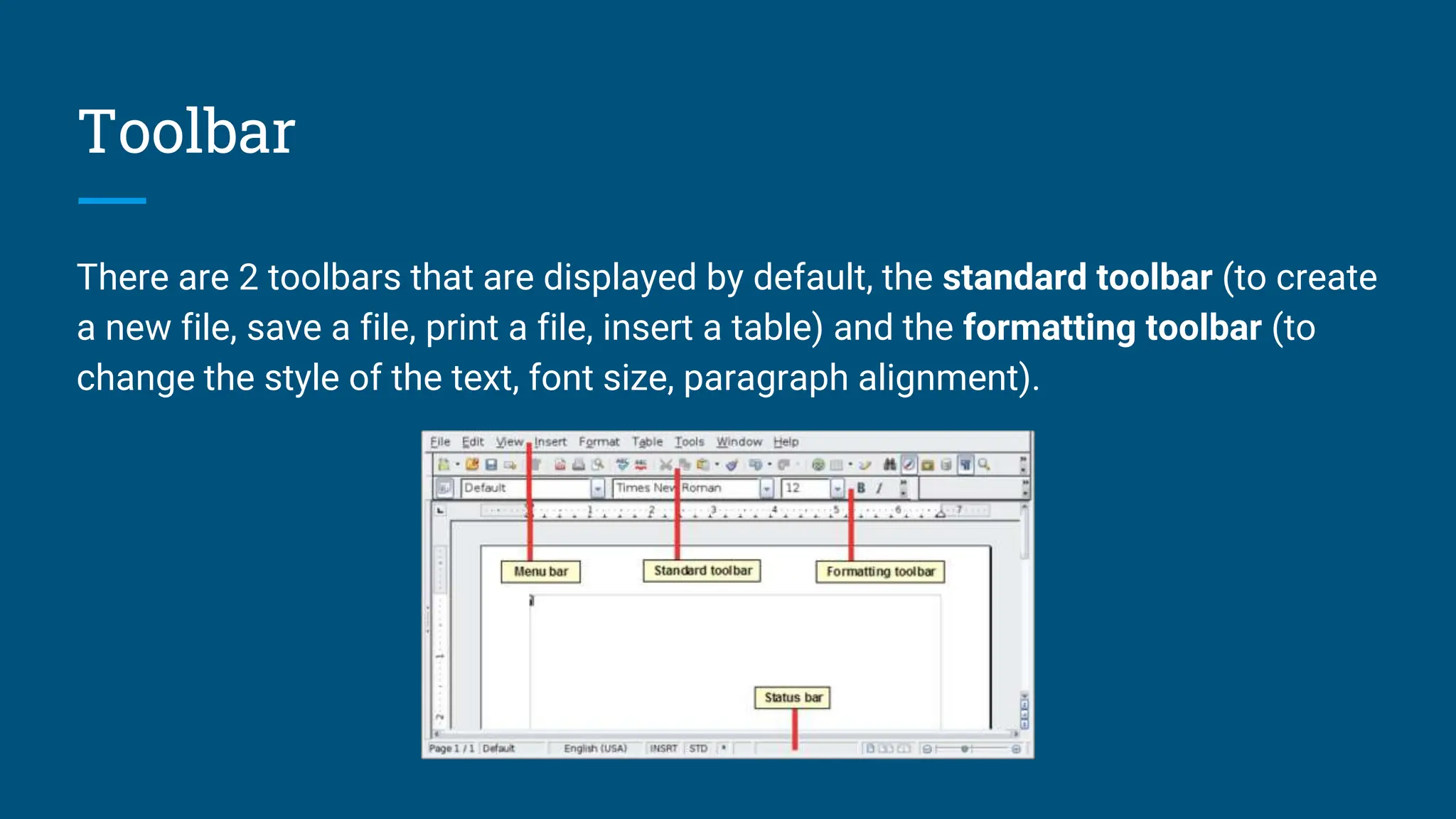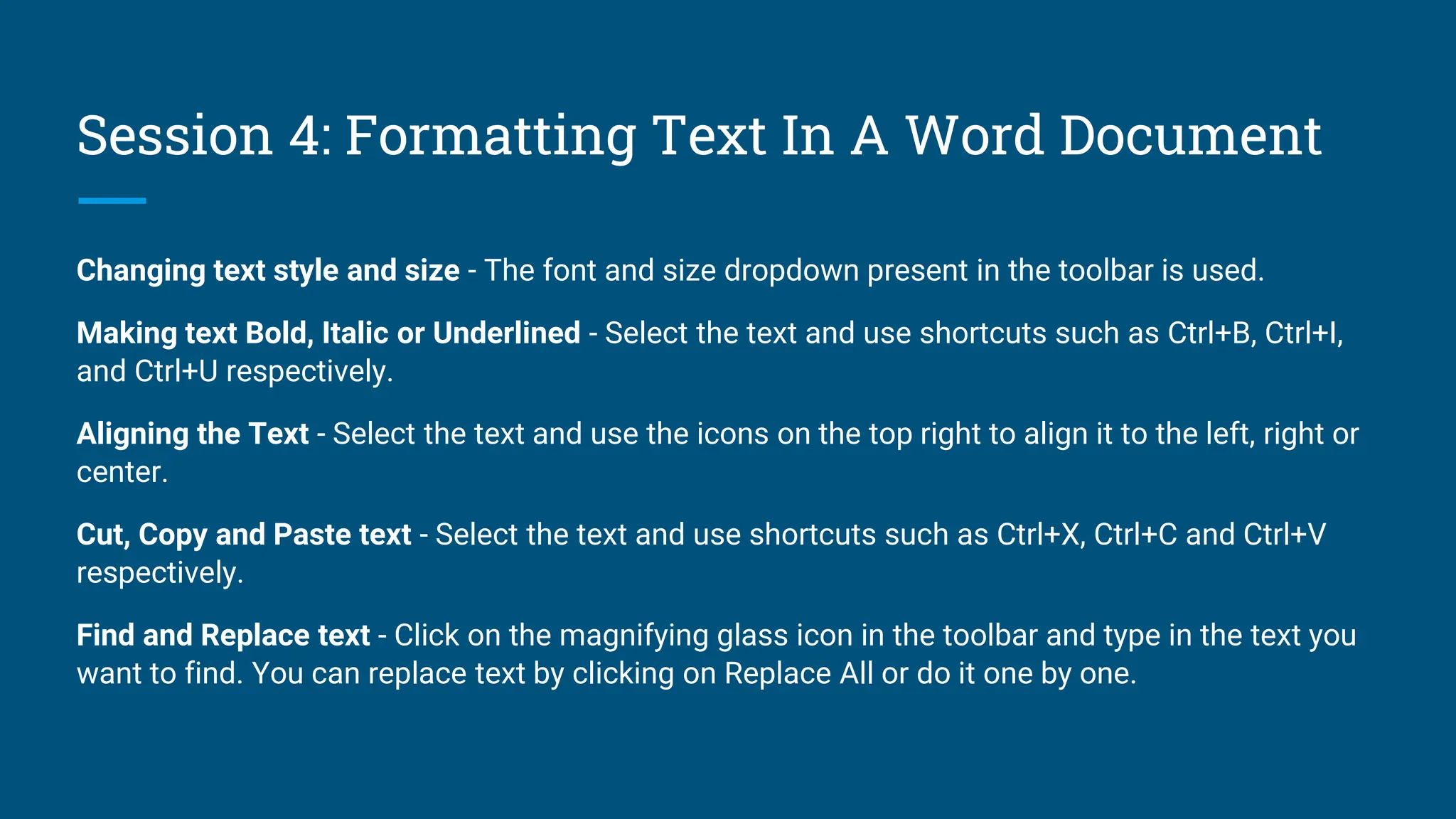The document provides instructions on how to use various features of word processors like LibreOffice Writer. It explains how to create and open documents, insert headers, footers, page numbers, lists, tables, images and shapes. It also discusses how to change text formatting, check spelling and grammar, track changes and compare documents when editing text. The document is a guide for beginners to learn the basic functions and interface of word processors.
